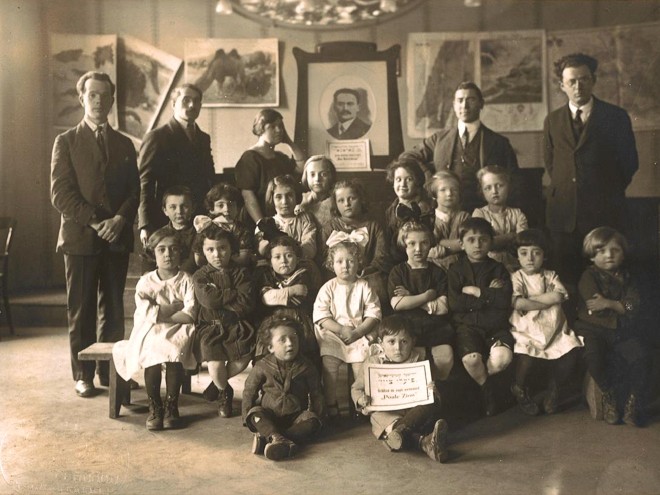Miriam Udel states in her introduction to Honey on the Page that her goal is to challenge traditional marketing by designing a multigenerational collection of Yiddish stories and poems, one which parents, grandparents, educators, and children can read together and discuss. The book is designed with this goal in mind, a concept intrinsic to the continuity of a language which used to be widely spoken and the source of a great body of literature for both children and adults. A foreword by renowned scholar Jack Zipes explains the need for reviving and studying Yiddish literary works for children.
Udel’s comments are so illuminating as to make her introduction a work of independent value. Her tone is not so much scholarly, but rather as if an expert in the field were giving a personal lesson to interested readers. She contextualizes Yiddish as “a resplendently hybrid tongue drawing on several of the other languages that vied for its speakers’ and readers’ allegiance.” Threatened by assimilation, the Yiddish language uniquely “developed in an atmosphere of urgency…not only to bring about an affirmative vision but also to forestall a catastrophe of neglect.” Understanding this unusual circumstance, readers are prepared to delve into the treasures ahead, each one designed to attract the attention and allegiance of the young people who can keep Yiddish vital in the future. Udel’s comprehensive introduction to her subject prepares readers to enjoy texts which reflect the themes of Jewish holidays, history and heroes, folktales, family life, and other foundational topics.
There are many gems in this collection. In some, such as Kadia Molodowsky’s “The Baker and the Beggar,” the perennial theme of one mitzvah leading to another is given a detailed setting of social inequality. Children reading it today will note the wide disparities in expectations in a world where the baker’s signs of prosperity includes such family luxuries as “a new woolen jacket…their children now wore shoes without holes…they had bought drinking glasses and spoons by the half dozen.” Isaac Metzker’s historical tale, “Don Isaac Abravanel,” was published during the Holocaust, drawing on the legacy of the great Spanish scholar and philanthropist who came to the aid of his people in a time of crisis. The sad parallels of the 1940s to the medieval era’s persecution would have been evident in the words “…we resisted the murderers, and many Jews were killed on the spot…I left my home and my property in the bloody hands of the robbers.”
One of the most appealing selections is from the series “Labzik: Stories of a Clever Pup,” by Khaver Paver, the pen name of Gershon Einbinder. Set in New York City during the 1930s, these are linked tales about a secular family of labor union activists meeting the challenges of the Great Depression with commitment and optimism. When Berl, the father, informs his family that there will be a strike at his factory, everyone is supportive. Even Labzik joins their litany of complaints about harsh conditions by barking along enthusiastically. Waking to learn that the rest of the family has left to join the picket line, Labzik manages to board the Lexington Avenue Express train and catch up with the children, “so overjoyed that he didn’t know what to do with himself.” The story offers a wonderful opportunity to explain the consistent presence of social justice which at one time characterized Jewish life, and which is still of tremendous significance today.
Honey on the Page: A Treasury of Yiddish Children’s Literature is highly recommended for both children and adults. In addition to the foreword and introduction, Udel includes a special introduction written specifically for children.
Emily Schneider writes about literature, feminism, and culture for Tablet, The Forward, The Horn Book, and other publications, and writes about children’s books on her blog. She has a Ph.D. in Romance Languages and Literatures.




